As soon as they see a bike, they can’t quit, and off they go.
Another annual running of the Tour de France just began last weekend, and the timing couldn’t be better for the nation that hosts the world’s greatest bicycle race. The French national soccer team suffered humiliating opening-round failure in the just-concluded World Cup of football/soccer in South Africa, an embarrassment compounded by the fact that their neighbors to the north (Netherlands) and south (Spain) played for the trophy. Even in light of the snide sarcasm directed their way in last week’s featured Eclipse title Mr. Freedom, France badly needs the boost to their collective self-esteem provided by this impressive, internationally renowned event.
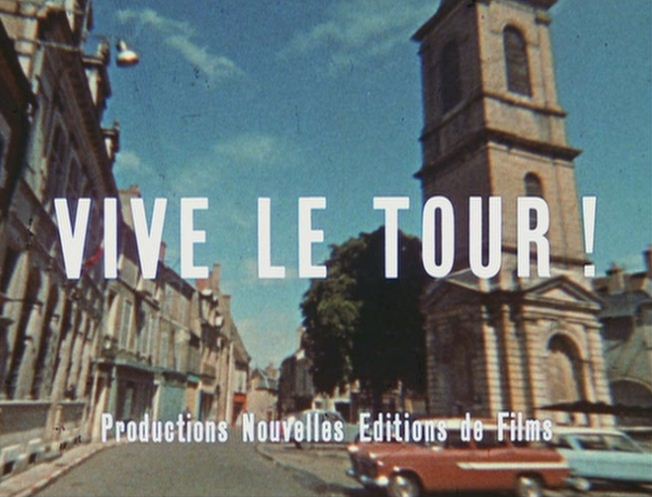
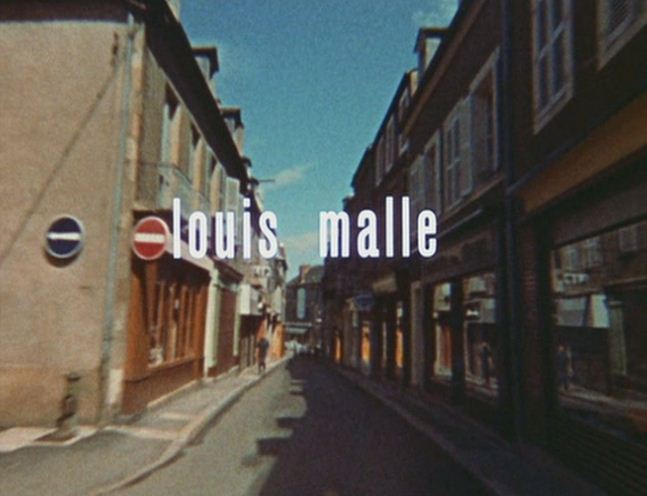
Though I’m a sports fan (American baseball and football mainly), I have to admit I’ve never paid close attention to or even understood the Tour de France, despite having a brother-in-law who’s followed it closely for years and tried explaining to me how the champions are determined on several occasions. But there’s nothing like a well-made documentary to draw my interest in a new subject and that’s what I’m here to write about this week: Vive le Tour, a short subject from Eclipse Series 2: The Documentaries of Louis Malle. This film is only 19 minutes long and focuses more on the visceral experience of participating in the race or observing it as a spectator, rather than the mundane results of who won what stages or whether any records were broken. In that respect, it reminded me of Kon Ichikawa’s Tokyo Olympiad from 1964, where the camera lingered on the athletes in motion and gave only scant attention to the outcome of the competition.
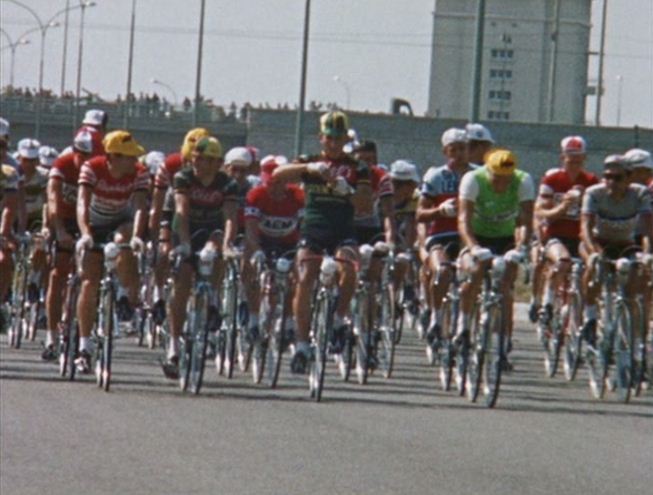
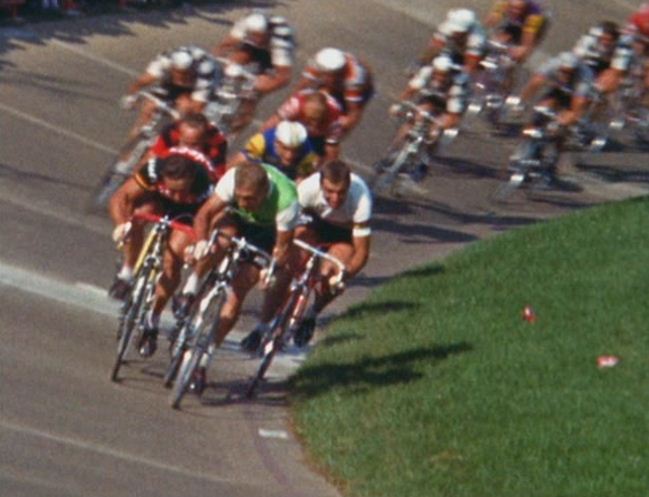
Instead of a report on what specifically happened in a particular series of races held in the summer of 1962, what we have in Vive le Tour is a gripping though brief impression of what Le Tour looked and felt like in that era, back when France was a lot more traditional, monocultural and low-tech than the scenes we can watch on our screens over the next few weeks. Imagine dozens if not hundreds of men hurtling across the countryside on their bicycles at speeds upwards of 30 mph, not a single bike helmet in sight. Some of the injuries suffered for that lack of precaution are caught on camera here: blood pouring down the side of a rider’s head as he pedals relentlessly while a friend in a car rolling alongside him daubs at the wounds; other cyclists woozy and wobbling until they literally topple over in the street, likely victims of concussions, exhaustion or other internal injuries in the aftermath of a massive crash. The bulk of these guys aren’t probably much past 5′ 6’ and 140 lbs (convert to metric as necessary) but they are some tough dudes!
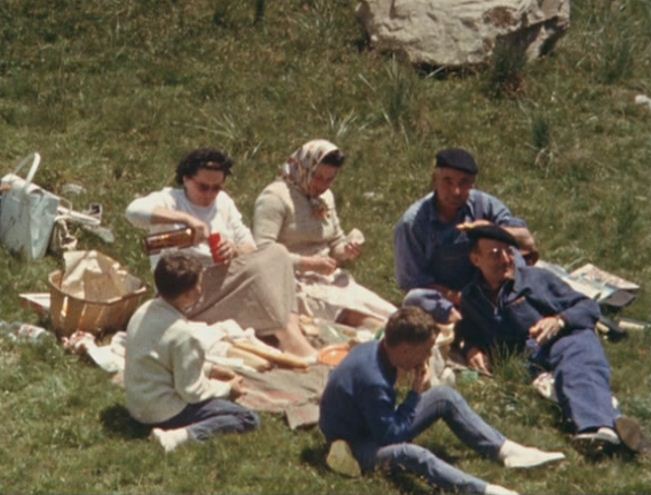
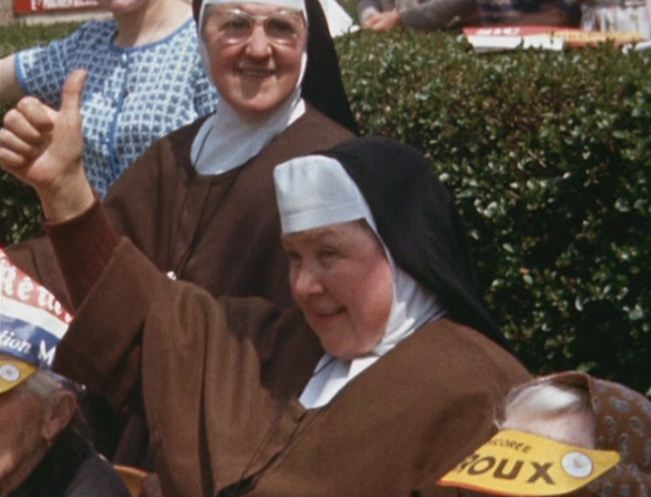
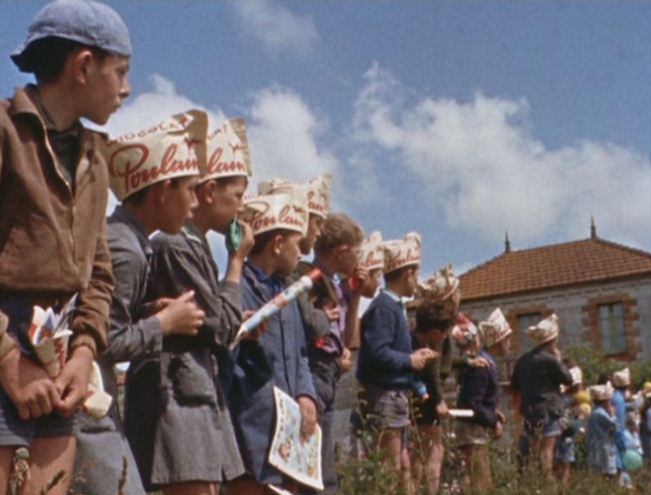
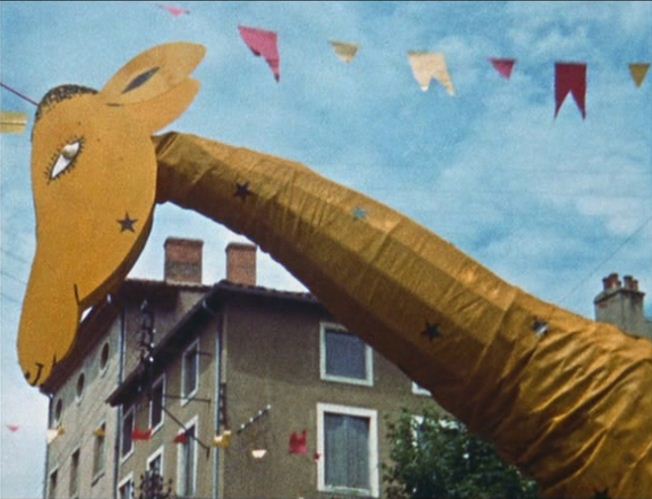
Meanwhile, other anachronisms caught in the footage include inhabitants of the rustic French villages lining the streets, wearing the caps and colors of favorite riders, many of whom are in the competition to bring honor and perhaps more tangible rewards for themselves and the area they represent. Through the spectacle they create, it’s obvious that even at this time the Tour de France was a commercialized, highly organized affair, but we can’t help but appreciate the homespun funkiness on display. Spectators routinely break out of the sidelines to help push straggling cyclists up the mountain inclines, a breach of etiquette (and security) that would be utterly intolerable nowadays. Vive le Tour opens with the garish artwork and parade float decor of the festivities. We also witness ‘drinking raids,’ where riders swiftly jump off their bikes, barge into roadside cafes and just grab whatever liquid refreshments were at hand ‘“ champagne, beer, wine ‘“ leaving the tour promoters to foot the bill when the race had concluded. And after the cyclists had finished their chugging, of course they’d have to relieve themselves of the fluids they hadn’t already sweated out ‘“ and Louis Malle’s camera is there to immortalize those transient moments!
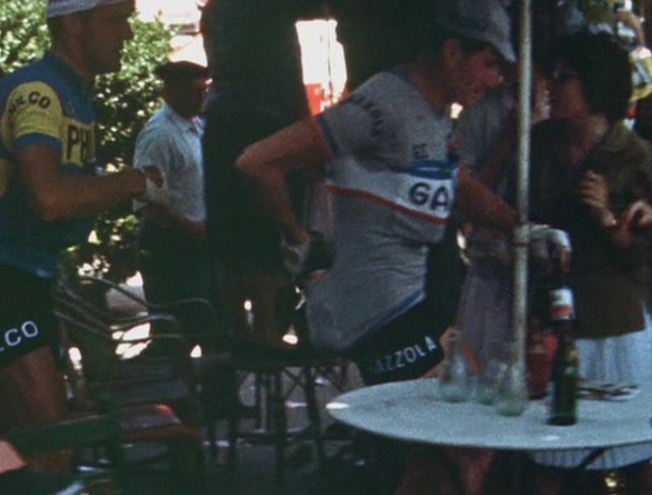
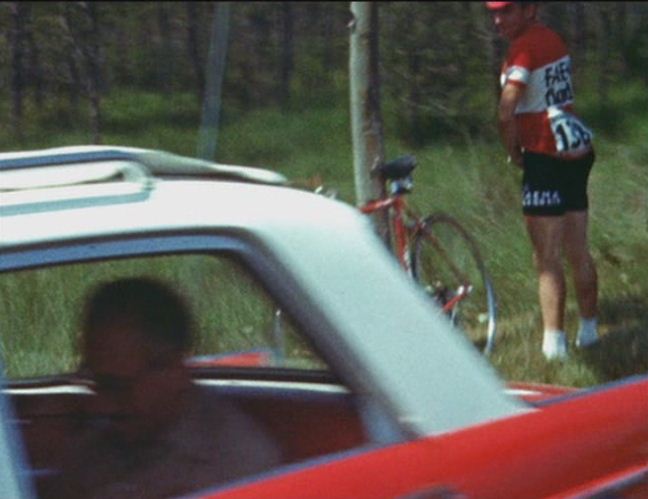
The tour was nearly 60 years old at this time, certainly at a mature enough point in its development that serious prestige and intense competition factored into the public’s interest. The festive atmosphere and its galvanizing effect on bringing masses of people together in celebration of a beloved tradition overcame the signs of corporate exploitation that were already becoming quite evident, though still pretty modest in comparison to the logo-festooned jerseys of today’s riders and the surrounding sea of advertising through which they pedal. And doping scandals were beginning to encroach on the supposed purity of the sport (although cheating of all sorts goes back to the very earliest races, reaching such a crisis point that the whole thing was almost called off after only the second year!)
So as a glimpse of a colorful, simpler stage in the evolution of a sport, Vive le Tour has historic value, but Malle’s accomplishment goes beyond satisfying our curiosity or inducing nostalgia. It’s also a finely crafted film, not merely an assembly of scraps from various points in the month-long procession. Malle, still a relatively young filmmaker at the time, demonstrates technical expertise and a sharp eye for detail, whittling his project down with the same spartan discipline embodied by the athletes he filmed. He and his crew incorporate excellent footage from a variety of perspectives, mostly handheld shots, incorporating swift blurs of pure motion, first person compositions as if we were pedaling in the race ourselves, and intense close-ups of grimacing, sweat-dripping faces pushing their bodies to the limit over many different terrains ‘“ countryside, mountain passages, small towns and big cities. A dynamic and creative sound mix augments the viewer’s involvement as well, conveying in a brief span of time a vivid sense of just how demanding Le Tour is on the physiques and psyches of the competitors.
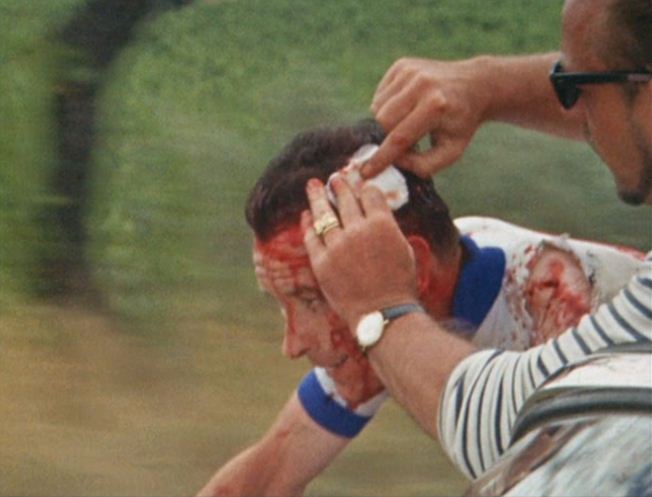
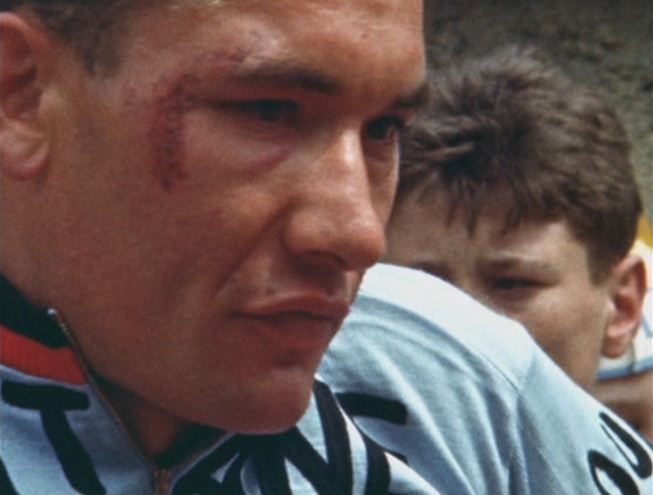
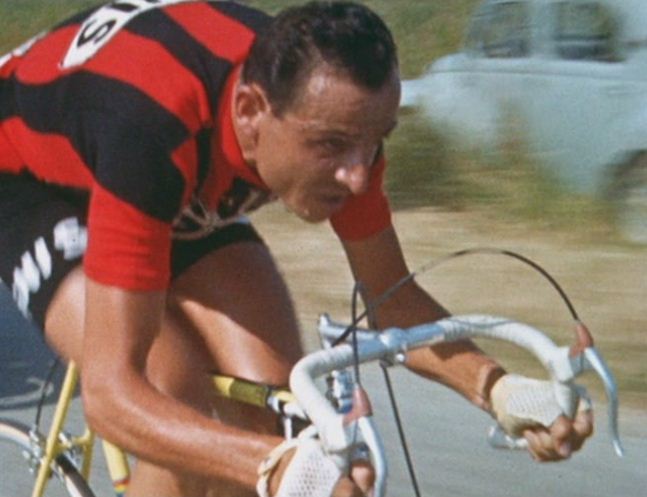
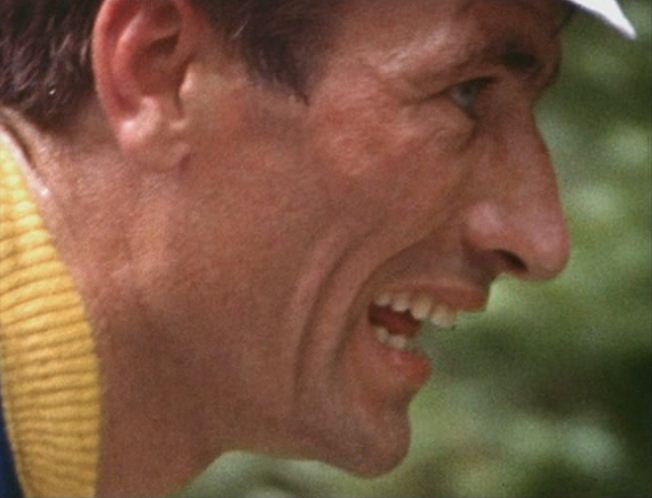
Louis Malle ranks among the most accomplished directors featured in the Criterion Collection, producing a number of highly-regarded and award winning documentaries and traditional narrative stories over a 30+ year timespan. I risk embarrassing myself by admitting that I’m not as familiar with his work as I should be. I’ve seen and enjoyed Elevator to the Gallows and The Lovers, but that’s it so far! I know there’s a lot more to be discovered, so I won’t pretend to offer any great insight on Malle’s career ‘“ but this brief sample of what’s generally seen as a minor work offers the promise of many more intriguing and challenging cinematic masterworks to come.
You can watch Vive le Tour in its entirety on YouTube, in two parts. But I recommend the DVD!
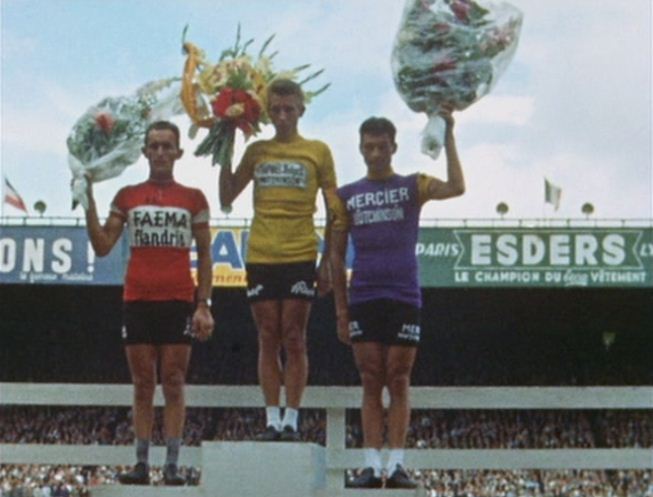


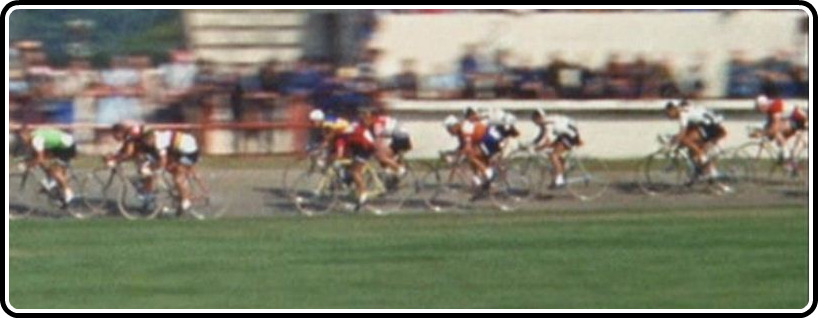



![Bergman Island (The Criterion Collection) [Blu-ray]](https://criterioncast.com/wp-content/uploads/2022/11/bergman-island-the-criterion-collection-blu-ray-400x496.jpg)
![This Is Not a Burial, It’s a Resurrection (The Criterion Collection) [Blu-ray]](https://criterioncast.com/wp-content/uploads/2022/11/this-is-not-a-burial-its-a-resurrection-the-criterion-collection-blu-ray-400x496.jpg)
![Lars von Trier's Europe Trilogy (The Criterion Collection) [The Element of Crime/Epidemic/Europa] [Blu-ray]](https://criterioncast.com/wp-content/uploads/2022/11/lars-von-triers-europe-trilogy-the-criterion-collection-the-element-of-400x496.jpg)
![Imitation of Life (The Criterion Collection) [Blu-ray]](https://criterioncast.com/wp-content/uploads/2022/11/imitation-of-life-the-criterion-collection-blu-ray-400x496.jpg)
![The Adventures of Baron Munchausen (The Criterion Collection) [4K UHD]](https://criterioncast.com/wp-content/uploads/2022/11/the-adventures-of-baron-munchausen-the-criterion-collection-4k-uhd-400x496.jpg)
![Cooley High [Criterion Collection] [Blu-ray] [1975]](https://criterioncast.com/wp-content/uploads/2022/11/cooley-high-criterion-collection-blu-ray-1975-400x496.jpg)
1 comment